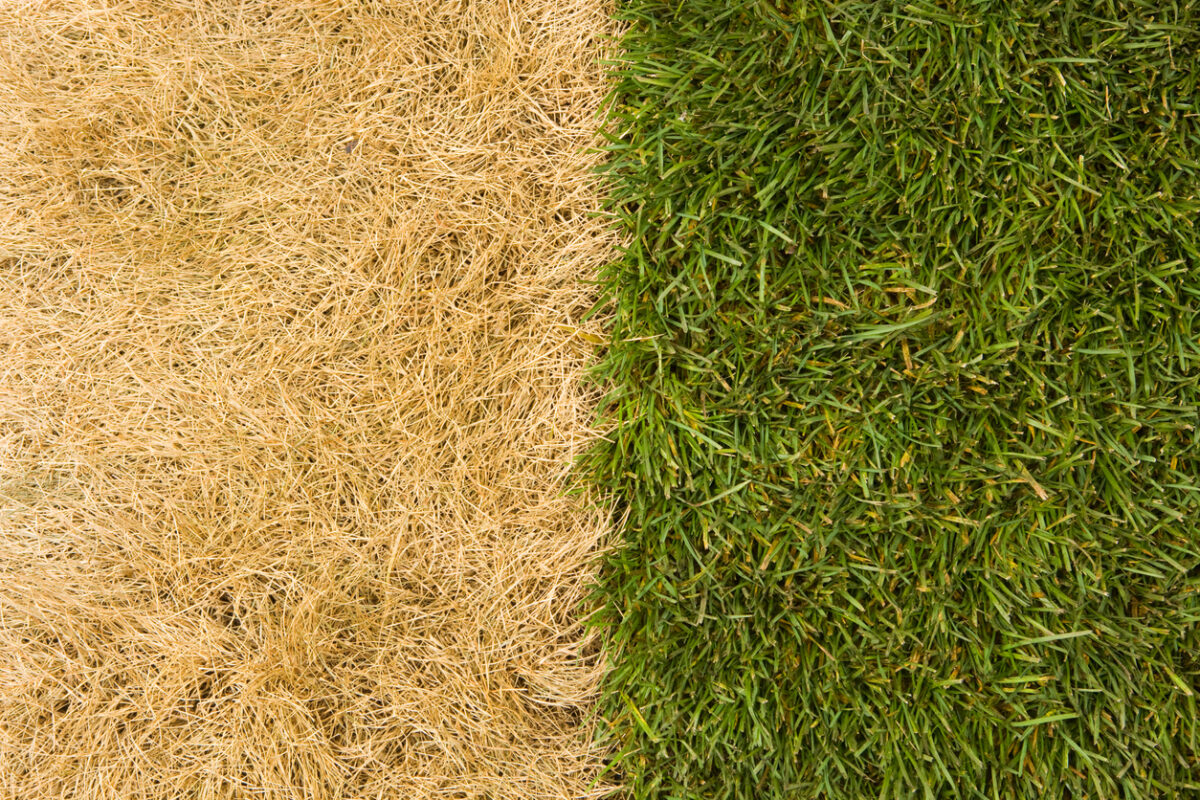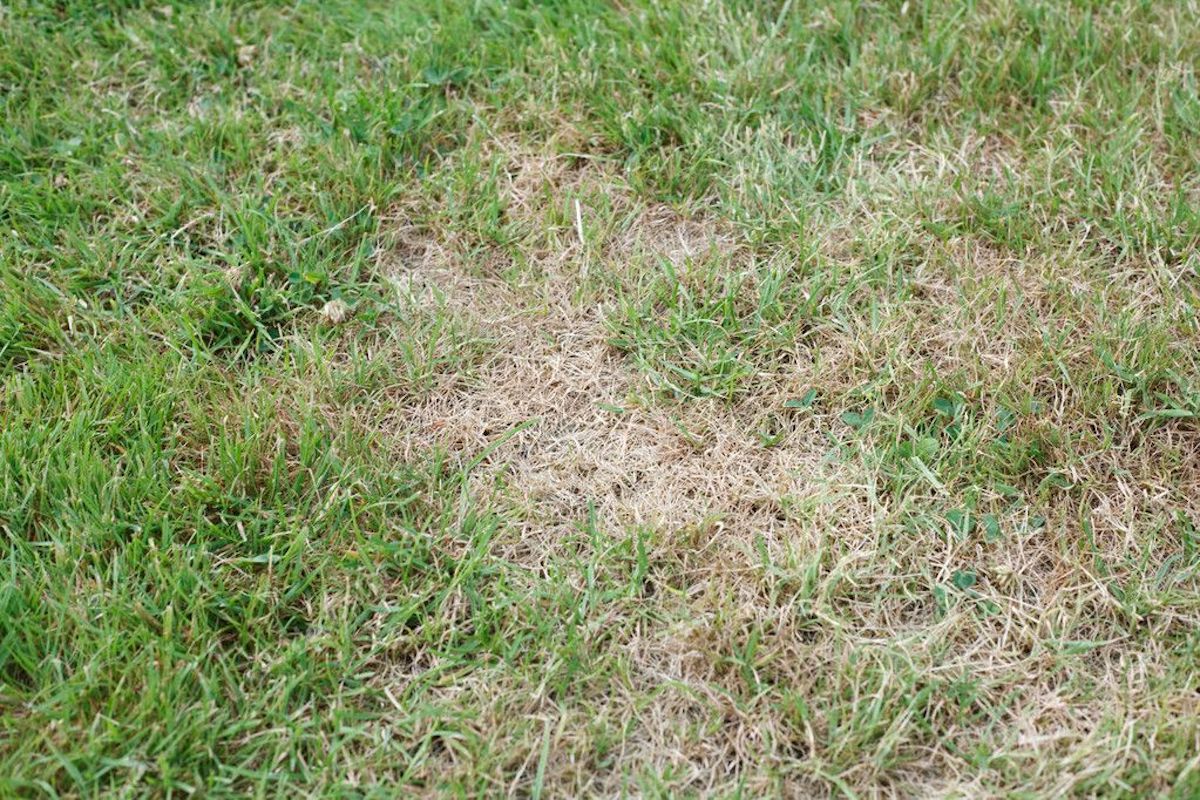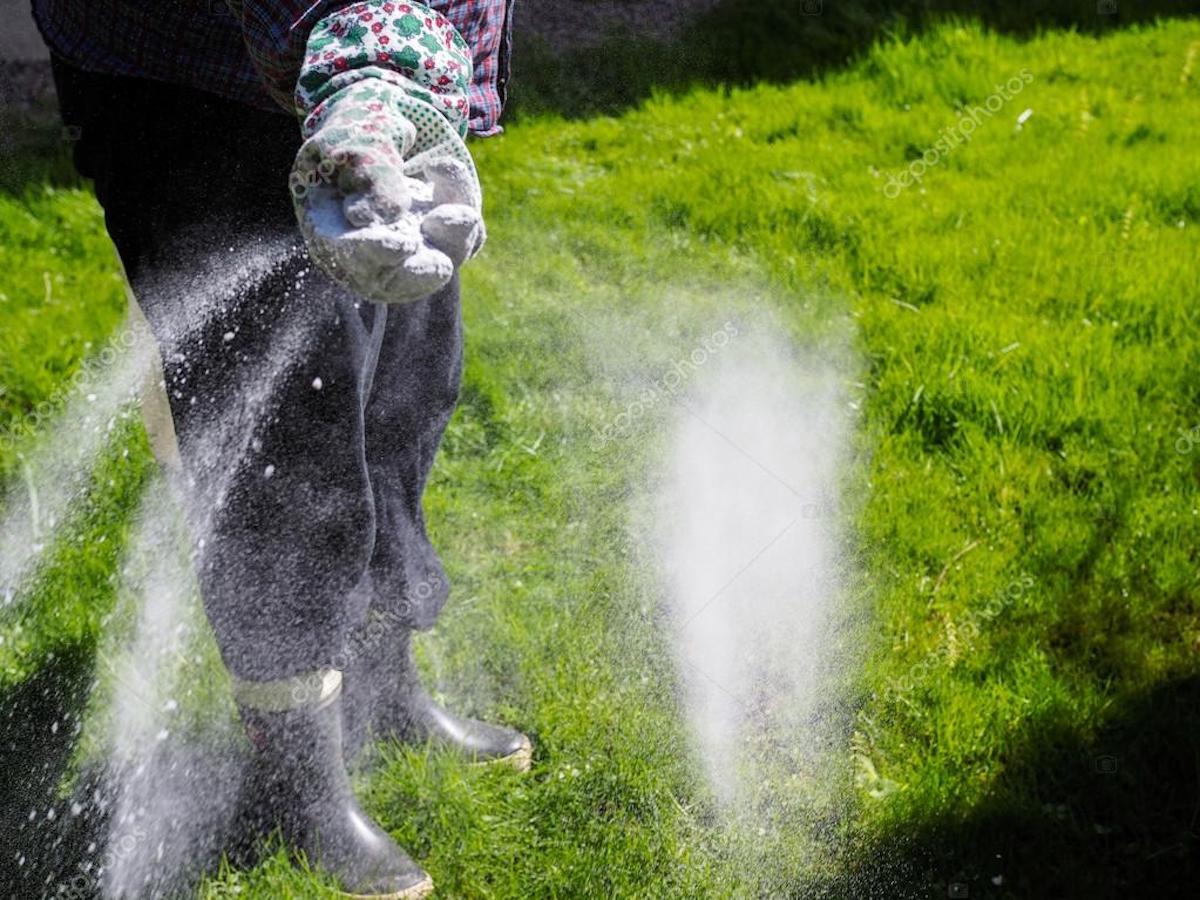

We may earn revenue from the products available on this page and participate in affiliate programs. Learn More ›
Fertilizers are formulated primarily with nitrogen, potassium, and phosphorus, three nutrients that work together to help keep your grass green, thick, and resistant against drought, fungus, foot traffic, and other potential threats. However, too much fertilizer can turn grass yellow or brown, making it look as if it has been burned.
This condition is called fertilizer burn—and it’s one of the most common fertilizer mistakes home gardeners make. Thankfully, there are steps you can take to reduce or minimize fertilizer burn and bring back your green lawn.
What is Fertilizer Burn?
So, what is fertilizer burn? Fertilizer burn is a lawn care and gardening mistake that can cause plants or grasses to become scorched or burned. It can occur when a lawn or plants are over-fertilized, as well as when fertilizer is applied over wet plants or grass. The “burn” is caused by the salts in the fertilizer pulling too much moisture out of the grass or plant.
RELATED: Solved! Does Fertilizer Go Bad?
What Does Fertilizer Burn Look Like?
Fertilizer burn is an appropriately named term—grass and plants look as if they have been scorched by fire when afflicted with fertilizer burn. Rather than a healthy green color, these plants will have brown or yellow streaks or splotches on them. With fertilizer burn, you may also notice patches of dead grass.

How to Fix Fertilizer Burn
Depending on the level of damage done to your grass, you may be able to reverse the effects of fertilizer burn and help your lawn grow back lush and green. The important thing to remember when fixing fertilizer burn is that you need to reduce the amount fertilizer left in the soil. Once the amount of fertilizer present in the soil decreases, it will stop causing additional harm. Follow the steps below to learn how to reverse fertilizer burn.
-
Scoop up as much excess fertilizer as possible. If there is still any granular fertilizer on your lawn, begin by using a small shovel to scoop up as much excess as possible.
-
Rinse the soil with water. Next, use a garden hose or sprinkler to flush the soil. Aim to apply about 1 inch of water each day for 4 to 7 days in a row. This will help to dissolve the salts in the fertilizer and remove any buildup of excess fertilizer in the soil.
- Reseed the lawn if necessary. After flushing out the soil, give the lawn a few weeks to see if it recovers on its own. If the grass still isn’t looking healthy, reseed the affected areas with new grass seed.

How to Prevent Fertilizer Burn
Learning how to prevent fertilizer burn in the first place is the best way to keep your grass healthy. Use these suggestions to ensure your lawn isn’t negatively impacted by fertilizer.
-
Use a slow-release fertilizer. Slow-release fertilizers are a good option to use with plants or lawns that require more regular fertilizing. They will gradually release salts into the soil, making over-fertilizing less likely.
-
Do not apply fertilizer to wet grass. Fertilizing when the soil or plants are wet can increase the chances of fertilizer burn. Only apply fertilizer when the grass and soil are dry.
-
Water your lawn well after applying granular fertilizers. If you apply a granular fertilizer to your lawn, be sure to water the grass well after each application. This will help remove any fertilizer sitting on the blades of grass or plant leaves and will help ensure the fertilizer spreads evenly through the soil.
-
Fertilize using compost or organic fertilizer. Compost or organic fertilizer are less likely to cause fertilizer burn. Plus, they will still help keep your plants and grass healthy.
-
Apply the right amount of fertilizer. Research the appropriate amount of fertilizer for your lawn size and the types of plants and grass you have. Follow expert instructions and avoid over-fertilizing your yard.
-
Do not apply fertilizer during a drought. During periods with no rain, fertilizer can remain too concentrated in your soil. Wait to fertilize grass and plants until the drought is over, as rainwater can help dilute the concentration of fertilizer in soil.

Final Thoughts
Fertilizer burn doesn’t mean your grass is ruined for good. The tips and solutions shared above can help you save your grass, return it to a healthier state, and prevent fertilizer burn from happening again. When working with fertilizer, remember that you should never allow the water to run off. Chemicals in fertilizers can threaten animals and other plants in the area.

RELATED: The Best Lawn Fertilizers
